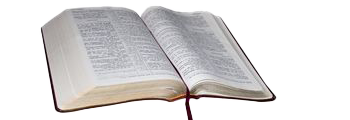
CHURCH OF THE BRETHREN NETWORK
Continuing the work of Jesus : Peacefully ~ Simply ~ Together
UNOFFICIAL WEBSITE OF THE CHURCH OF THE BRETHREN

 |
CHURCH OF THE BRETHREN NETWORK Continuing the work of Jesus : Peacefully ~ Simply ~ Together UNOFFICIAL WEBSITE OF THE CHURCH OF THE BRETHREN |
 |

The Renaissance
circa 1300 - 1600 AD
The Renaissance was a three hundred year period of history beginning in Italy about 1300, spreading across Europe during the 1400-1500's to finally arrive in Britain sometime near 1600. Great changes took place in painting, sculpture, architecture, exploration, and learning with the revival of Greek and Roman classical forms. It was an intellectual explosion involving a heightened curiosity about individual, social purpose which many consider as one of the early roots of modern humanism.
Renaissance literally means "rebirth," as a French translation of the Italian "rin ascita." During the Middle or Dark Ages (500-1300), people lived in class structures emphasizing the group. People born into a particular group, nobleman or peasant, expected to always live in that group, never thinking of migrating into another group. During the Renaissance, class distinctions became less significant because more emphasis was given to the individual. People began to judge each other according to merit instead of class or tribal birth.
Artists tried to glorify this new individualistic spirit. Painting was almost an unknown craft in previous centuries, whereas now it gained respectability. The Renaissance painter wanted realism and accurate three dimensional detail instead of the flat, two dimensional unrealistic figures in previous work. Middle Age paintings were mostly religious themes, but the new spirit favored landscapes and everyday life. Masaccio calculated the natural laws of perspective into his painting of buildings while Raphael painted frescoes for the Vatican. In architecture, Brunelleschi designed and successfully covered the vast Cathedral of Florence with a massive dome, and in sculpture, Donatello produced statues exhibiting features of increased realistic human anatomy.
The cause of the Renaissance is due to a combination of principally two different factors involving trade and migration. During former centuries, many of Italy's city-states (Venice, Florence, Genoa) grew wealthy from international trade. The ships of Venice carried from Asia to Europe, spices and items of luxury. Italy also witnessed the rise of a new social group, powerful merchant-bankers who encouraged learning, and themselves became celebrated patrons of art such as the de Medici family of Florence. During this same period a new empire was forming in the middle-east, the Ottoman Turks were zealously intent on regaining lands that were previously lost to both Christian Crusaders from the west and the Mongols from the east. Both groups, at different times, had evicted the Seljuk Turks from Anatolia (modern Turkey), and now the Ottomans were zealously committed to recapturing their land, a zeal that later took them up the Danube River to the walls of Vienna.
In 1326, they destroyed and rebuilt the city of Bursa, making it their capital. This city was just south of their prize, Constantinople and the seat of the glorious Byzantine Empire which was also the surviving eastern half of the ancient Roman Empire. As the threat of a massive invasion steadily increased, merchants, scholars, and priests gradually began leaving for the west, and especially the security of Italian city-states. Along with them went treasures, artifacts, paintings, and the only surviving copies of numerous classical manuscripts. In some cases, all that is known today of the ancient world is derived from these precious manuscripts. When the buildings of the western half of the Roman Empire were destroyed in the late Fifth century, it also included their libraries. The Byzantines have contributed to western Europe a priceless treasure of knowledge, and wealthy Italian patron families encouraged the natural curiosity of local artists, scholars, and craftsmen into their acquisition by fate.
The Renaissance was a culmination of eastern knowledge arriving in secure Italian cities-states where merchants and patrons were uniquely prepared to sponsor and accelerate learning from this gift.
Written by Ronald J. Gordon as extended information for other major articles